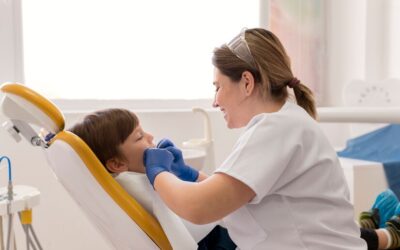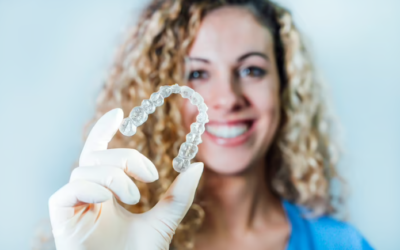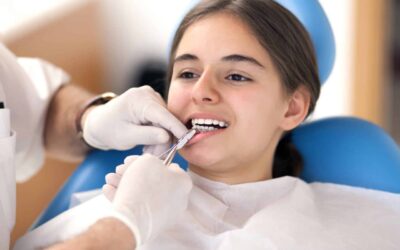Everyone wants a healthy & shiner smile on their faces. People take the help of orthodontic treatment to provide perfect shape to teeth by straightening or moving them. It helps to improve their appearance and also enhances their work. The timely consumption of cold & hot food items adversely affects teeth, gums, and jaw joints. If we take regular consultations with dentists and follow the correct measure, our teeth regain their health.

Talking about the correct age to get such orthodontic treatments, people recommend it during childhood. However, dentists provide services to adults, as their teeth are fully grown up for dental care treatments. Age has no relevance, instead, the correct examination can help to detect problems with x-rays & plaster models.
Different Orthodontic Treatments
As we already know, it can help to make our teeth alignment straight & correct. The most common appliance used to sort the shape of teeth are braces. Let’s discuss other dental appliances and their benefits.
Treatment With Fixed Appliances
Fixed appliances are convenient to use in daily life. Users are required to be cautious with selected food and drinks. Also, if you are a sports lover with oral injury possibilities, a dentist can provide you with special shields.
Braces: The best solution & most reliable used by dentists or specialists for orthodontic treatment is teeth braces. Dental braces put slight pressure on teeth, moving them in the desired direction. It is hardly noticeable in your mouth and provides excellent results in a shorter time. The majority of people get braces at a younger age still, but adults can get braces too.

Majorly, there are three main types: Metal braces, lingual braces, and self-ligating braces. Dentists put metal braces into teeth using a metal wire, while lingual braces are placed on inner teeth. Self-ligating does not stick with elastic bands in metal wire, instead inserted as a built-in system.
If visibility concerns you, it will be a better choice to use clear and colored teeth braces for convenience.
Treatments With Removable Appliances
People going through minor tooth problems can use these removable appliances. A few examples of such dental conditions are thumb-sucking and malaligned teeth.
Users can easily take out these dental appliances while eating, cleaning, and flossing. Sometimes with braces, there is difficulty in playing musical instruments or sports activities.
Clear Aligners: These are the best alternative to traditional braces providing the same alignment benefits. It effectively works to control tooth movements, without any brackets or metal wires. Aligners use long-lasting tough plastic materials, fabricated to fit each individual’s teeth settings. In comparison to other teeth braces, aligners are more comfortable, easier to brush & floss, and less irritating to your gums & cheeks. Most importantly, it remains unnoticeable by other people.
Retainers: This removable retainer can be helpful after dental treatments, ensuring no extra movement of teeth. For instance, kids who get a habit of thumb-sucking retainers can stop these types of activities. Hawley retainers are made up of metal and acrylic, fit into your mouth’s roof comfortably, and wire-capture anterior teeth. Permanent retainers are the best recommended for lower front teeth.
Headgear: These are straps wrapped around the back side of the head that is attached to a metal wire in the front. The main aim is to hold the upper jaw & keep the back teeth in the best positions, and the front teeth are slightly pulled back. Unlike braces, headgear is worn outside the mouth partially.
Lip & Cheek Bumpers: This orthodontic appliance is worn to reduce the pressure of cheeks or lips connected to the teeth.
Palatal Expander: It can make your upper jaw wider, a plastic plate with few screws placed on the palate of mouth roof. These screws put pressure on bone joints and force them to move outwards. Using this expander can broaden the space or area of the upper part under the mouth.
How Orthodontics Can Help You With Dental Care?
The dentist can recommend orthodontic treatments under several conditions. Let’s understand a few cases where consulting an orthodontist becomes necessary.
- For proclined front teeth, it can improve outlook and control damage to teeth from sports injuries & falls.
- Crowding can be one reason, with a narrow jaw there will be less space for teeth so dentists can remove a few to make room for others.
- Impacted teeth can restrict the emergence of teeth from gum or bone among adults.
- In cases where the upper and lower teeth are not symmetrical with each other. So, even when the mouth is closed teeth are still visible.
- A deep bite shifts the upper teeth too much over the lower ones, and an open bit creates an opening between the upper & lower teeth while the mouth is closed.
- Under the crossbite, one of the upper teeth doesn’t come down when they are clenched. Instead, they are near the cheek or the tongue.
- Remove spacing, it is the opposite of crowding where teeth are missing and do not fill up the mouth.
Get A Dental Checkup With Mint Dental!
If you are dealing with dental challenges, Mint Dental can help to bring back your smile. We are specialized in orthodontic treatments and services, such as teeth whitening, cleaning, dental implants, orthodontic treatment, children’s dentistry, root canal treatment, dental crowns & bridges, and tooth extraction. Our specialist can also help with tooth-colored fillings, clear aligners, porcelain veneers, and periodontal treatments. Visit our dental clinic or book online for appointments.



